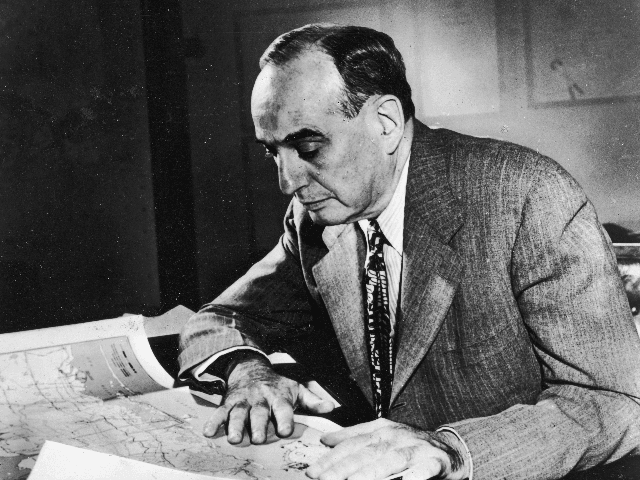Taxpayer-funded National Public Radio (NPR) is advancing the idea that a renowned urban planner was focused on racist strategies rather than making cities more livable for all residents.
NPR attacked Robert Moses and his efforts in New York during the 1920s and 1930s, which Robert Bullard, a professor of urban planning and environmental policy at Texas Southern University, said were designed to isolate and disadvantage minorities.
The narrative was aired on NPR’s Weekend Edition Sunday:
When the urban planner Robert Moses began building projects in New York during the 1920s, he bulldozed Black and Latino homes to make way for parks, and built highways through the middle of minority neighborhoods. According to one biography, Moses even made sure bridges on the parkways connecting New York City to beaches in Long Island were low enough to keep city buses — which would likely be carrying poor minorities — from passing underneath.
But Moses was no outlier. The highways and public spaces that shape our cities were often intentionally built at the expense of Black, Latino and other minority Americans.
“Transportation has always been embedded in civil rights and racism,” Bullard said, citing the 1896 Supreme Court decision Plessy v. Ferguson, which upheld state segregation laws.
“While the court would eventually come to reject the ‘separate but equal’ doctrine enshrined by the case starting in the 1950’s, Bullard says even today, not all transportation is created equal,” NPR reported. “Instead, cities often base plans for bus routes, highways and other infrastructure on a premise that some communities have more worth than others.”
Bullard, who has written and edited a number of books on the supposed relationship between race, cities and the environment, called urban planning policies “highway robbery,” because “minorities pay taxes at the same rates as white Americans, but those dollars then subsidize racist patterns of development.”
And, according to NPR, freeways and bus routes aren’t the only racist features of urban planning — highways, landfills, incinerators, bus depots, and other infrastructure “disproportionately fall in minority communities and often cause pollution and harm the health of residents.”
“Oftentimes, communities of color have the wrong complexion for protection,” Bullard said. ”You can’t wash race out of it … There’s all kinds of studies that show that race is still the most potent variable for predicting who gets more than their fair share of the ‘nasty stuff,’ and who gets more than their fair share of the good stuff.”
Bullard claims that these policies “shortens Black and brown lives” and the NPR article included the idea that “urban heat islands” — areas in cities without green spaces — can lead to deaths.
Moses has not always been demonized. In fact, in a 1939 article in the now far-left the Atlantic portrayed him as a hero:
Not long ago the automobile in which Robert Moses was riding was stopped by traffic lights at a busy street crossing in Manhattan. Suddenly the driver of a large truck leaned from his cab and asked excitedly: ‘Ain’t that Commissioner Moses?’ ‘Yes, that’s me,’ was the reply. ‘Well, I just want to tell you you’re doin’ a swell job on them parks,’ the man shouted. Then the lights changed.
This spontaneous tribute is indicative of the growing appreciation of millions of New Yorkers of all ages and classes for the man who, in less than five years, has remade or refurbished a considerable portion of the metropolis. The Commissioner of Parks under Mayor La Guardia’s Fusion administration is also head of the magnificent park system of New York State, which he conceived and largely created. He administers simultaneously a network of related agencies. His responsibility covers more than half a billion dollars’ worth of new city parks, playgrounds, swimming pools, and other recreational facilities; transformation of old ones; acquiring and developing scores of large park areas throughout the state; reclamation for public use of miles of waterfront around lakes, along rivers, and at the seaside; and the linking of these vast playgrounds and scenic places by a system of parkways, causeways, and bridges that are bold examples of engineering skill and are solving traffic problems in the most congested area in the world.
In a period of prodigious public expenditures Robert Moses emerges as the most farsighted and constructive of public spenders. He has demonstrated in brilliant fashion that democracy can be made to work by skillful, resolute handling, and that ‘public improvements’ can be given a surprising amount of beauty.
The NPR report said that legal challenges and other environmental justice efforts have advanced the idea that “access to the city, nature, bike lanes and walkable neighborhoods aren’t just the domain of the white middle class, but are open to poor, nonwhite people as well.”
Follow Penny Starr on Twitter

COMMENTS
Please let us know if you're having issues with commenting.